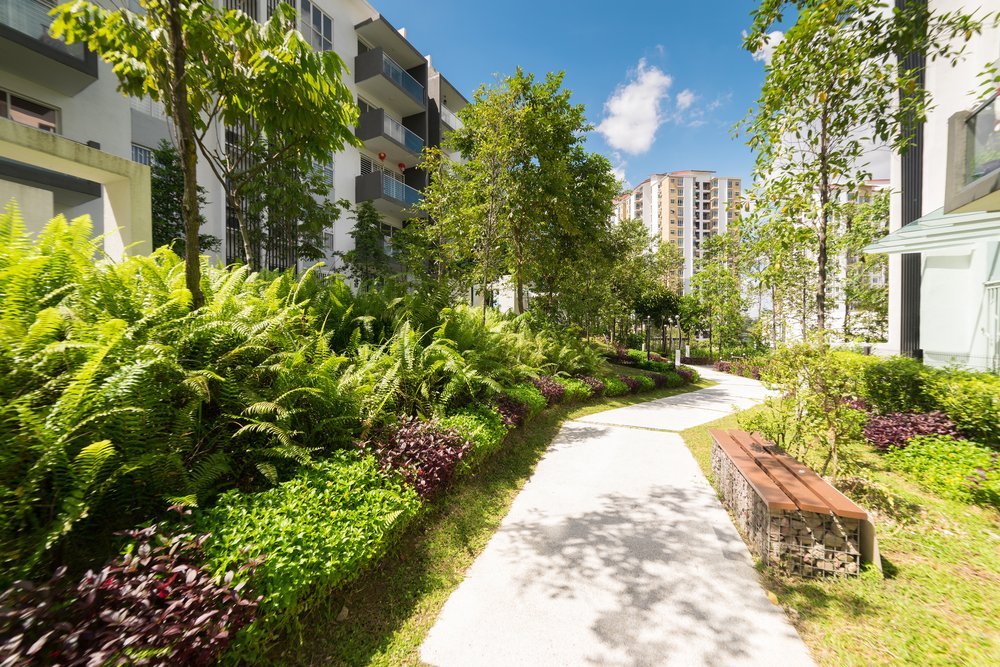Nowadays, activities to protect the environment and fight against global warming are increasingly popular across all areas. Architecture is an aspect where significant improvements are being made to become environmentally friendly. Green architecture is a strategy of construction that minimizes negative impacts on the natural environment and aims to save energy. So what is green architecture? How can you implement green architecture? Let’s find out more about it in this article!
Definition of Green Architecture
Green architecture is an architectural combination directly related to climate, ecology, and environment, including:
- Climate architecture: developed in the 60s of the 20th century in various countries.
- Environmental architecture: goes hand in hand with environmental protection.
- Bioclimatic architecture: the study of building shape simulation according to natural elements.
- Eco-architecture: propose an architectural design direction suitable for the ecological environment.
- Energy-saving combined architecture: buildings use office equipment, economical building materials, and consume less electricity.
- Adaptive architecture: designing architectural works that can adapt to climate change while still ensuring the essential needs of humans.
We can simply understand that green architecture is a construction solution to minimize the negative impacts of buildings on the natural environment and humans while trying to save natural energy sources, protecting land, water, air by choosing environmentally friendly construction materials.
Green architecture and sustainable architecture have some similarities. Not only paying attention to the ecological environment and climate but green architecture is also related to cultural, social, community, ethnic, aesthetic, and functional factors of the building. Therefore, the concept of green architecture in the 21st century must include two basic factors: Architectural requirements and green construction requirements, which means:
Green Architecture = Architecture + Green Construction
For construction works to be truly “green”, an important solution is technology. Synchronous technology has become a development trend in architecture around the world. It contributes to the process of reducing energy consumption, saving natural resources, and being environmentally friendly. The application of new technologies in construction is an urgent choice in the current energy crisis.
Projects using BIM design and synchronous management tools have gradually become common, even mandatory for large-scale construction, to ensure accuracy, the technical and economic rigor of the project.
Graphic and multi-dimensional calculation tools (Parametric) also allow stretching the limits of imagination and creativity. New technology solutions also maximize representation, image reproduction, and virtual reality, making visual effects easy, even deceiving feelings, or creating illusions.
Experts affirm that mastering synchronous technology enables constructors to handle many complex problems of the project, from design to construction operation and management.
Furthermore, to become green architecture, construction works need to satisfy several certain principles and criteria.
4 Principles of Green Architecture
Apply advanced science and technology to save and conserve energy resources
Green architectural technology uses natural energy resources economically and efficiently. It has to use clean energy, renewable energy, and reduce consumption. Besides, green buildings minimize the greenhouse effect and environmental pollution. The constructors also need to ensure waste disposal measures to avoid environmental pollution.
Wind and solar are two perfect alternative energy resources that can generate grid electricity for the whole region. These are clean, safe, economical, and environmentally friendly sources of energy.
Symbiosis with the natural environment
The exploitation process of green architecture combines with the conservation, compensation, and regeneration of nature. It is necessary to set plans to cope with climate and environmental changes. Construction projects should use natural construction materials such as bamboo, rock straw, products that do not contain toxic substances, which can be reused or recycled after dismantling the works.
Create a comfortable living environment for humans through green buildings
In addition to being friendly to nature, green buildings need to ensure the living demands of humans such as comfortable, fresh, healthy, suitable for culture, knowledge, customs. It has to minimize waste and optimize operation and maintenance.
In keeping with the history and culture of the region
Green architecture continues to inherit and promote the precious indigenous traditions of the region while still paying attention to the impact on nature and the environment.
4 Criteria To Evaluate Green Architecture
Planning location and construction site
First, architects need to choose a favorable planning location with little impact on nature and minimize costs. Green architecture should limit causing changes in soil, geomorphology, landscape, and natural ecosystem. Moreover, construction works should go hand in hand with the work of compensation, regeneration, ecological environment, meeting development needs, and integrating with the natural and human environment.
Architectural design
The spatial structure of the building needs to adapt to the climate and be suitable for human demands. It has to apply the following principles:
- Construction materials: friendly, no pollution, can be reused after dismantling the building.
- Interior design: to meet the usage needs, be appropriate for the regional customs and psychology of users.
Green technology for technical system
Builders need to come up with measures to treat and control waste, without harming or polluting the environment. It is necessary to exploit and use energy and raw materials reasonably and economically.
The operation, management, and use process
The operation, management, and use take place throughout the entire architectural life of a construction work. This process includes 4 stages:
- Before the construction
- During the construction
- In the exploitation phase of the construction work
- Dismantle the construction work when it is no longer in use.










